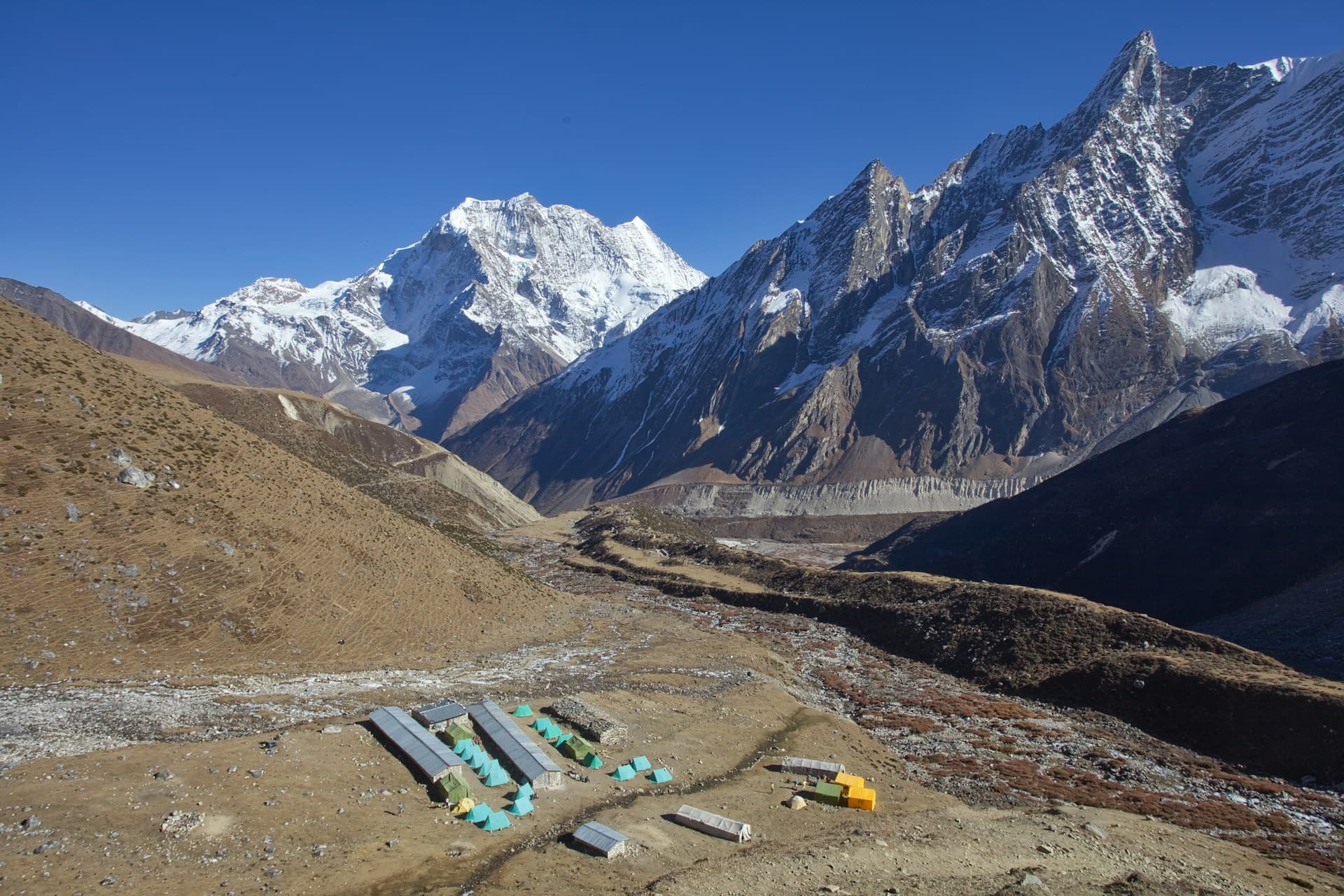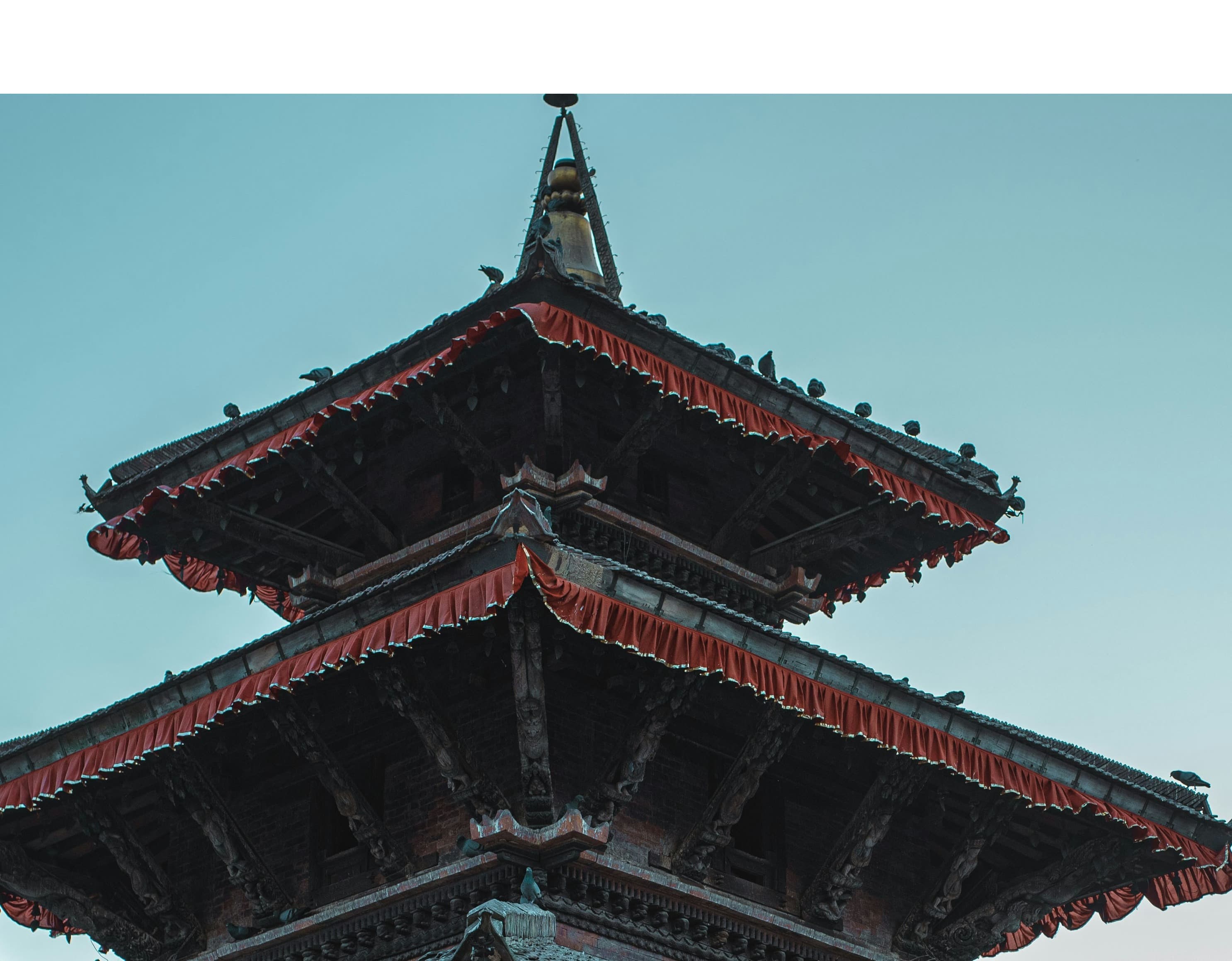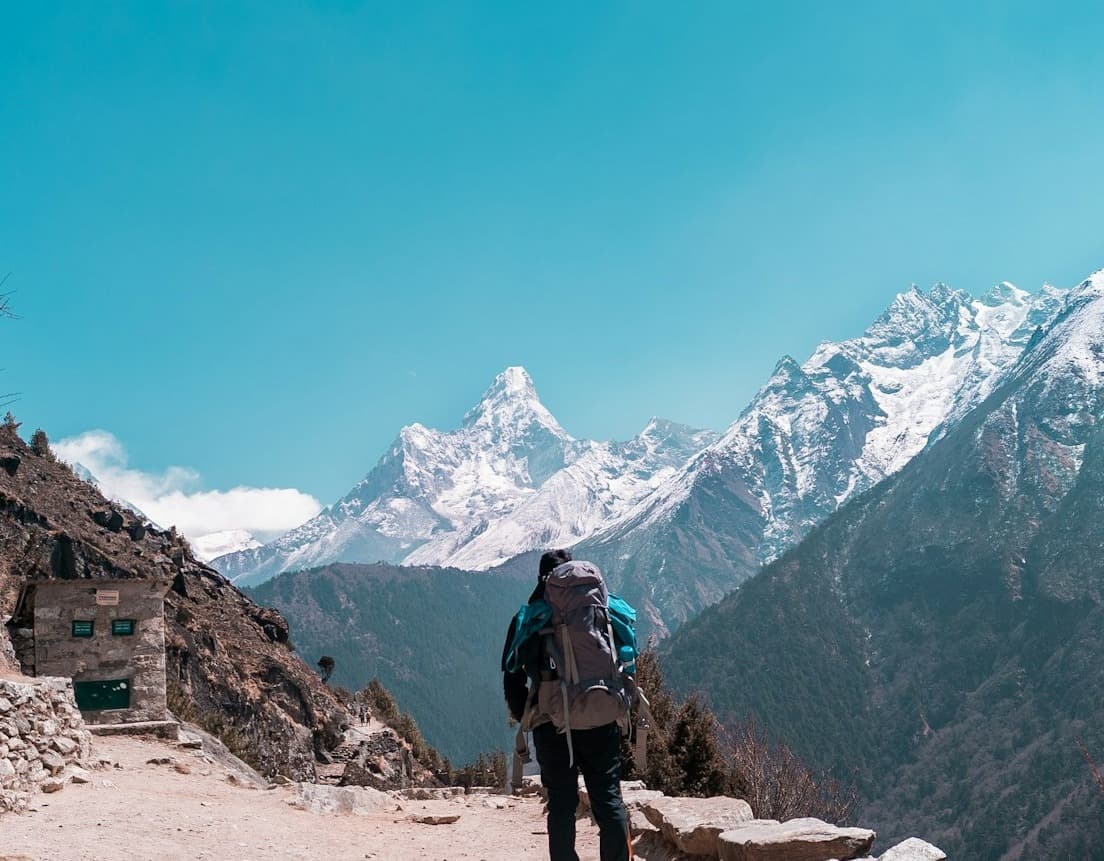Detailed Overview of the Tsum Valley Trek
Nestled in northern Gorkha, the Tsum Valley is a haven of ancient art, culture, and religion, deeply connected with its Tibetan origins and unique dialect. Known for its remote location and stunning natural beauty, the valley offers a tranquil trekking experience surrounded by the majestic Ganesh Himal, Shringi Himal, and Boudha Himal ranges.
Access to Tsum Valley treks was only opened to the public as recently as 2008, allowing its spiritual and natural richness to be shared with the outside world. The valley is dotted with significant monasteries, including the notable Rachen and Mu Gompas, which reflect the deep spiritual heritage of the local communities. The region's rich biodiversity is showcased through its vibrant forests, flowing rivers, and mysterious caves, making it a must-visit destination for nature lovers.
The trek begins with a picturesque drive to Arughat, followed by Soti Khola. Trekking northward along the Budhi Gandaki valley, the path winds through villages and lush forests of rhododendron and pine. After reaching Lokpa, the gateway to Tsum Valley, the route continues to Chumling, which is famed for its three monasteries: Pango Gumba, Gurwa Gumba, and Mani Dhungyr, and offers spectacular views of the surrounding peaks including Manaslu and Ganesh Himal.
The journey proceeds to Chhokangparo via Domje village, the largest settlement in Tsum Valley. As the elevation increases, the vegetation transitions from subtropical forests to alpine pastures and high mountain deserts. The trekking path includes a visit to the sacred Milarepa Piren Phu Cave near the Nile, a highlight of the spiritual journey within the valley.
At the northernmost part of the trek lies Mu Gompa, where the Buddhist sage Milarepa is said to have meditated. The journey back takes a different route, visiting Rachen Gompa and then proceeding to the Ganesh Himal Base Camp via Gumba Lungdang, offering a new perspective of the valley's diverse landscapes.
Finally, the trek concludes with a return to Lokpa and Jagat, followed by a descent to Lapu Bensi and then back to Arughat, where a bus journey brings trekkers back to the bustle of Kathmandu. This trek not only offers a profound cultural immersion but also showcases the dramatic beauty and serene wilderness of one of Nepal’s most cherished hidden valleys.
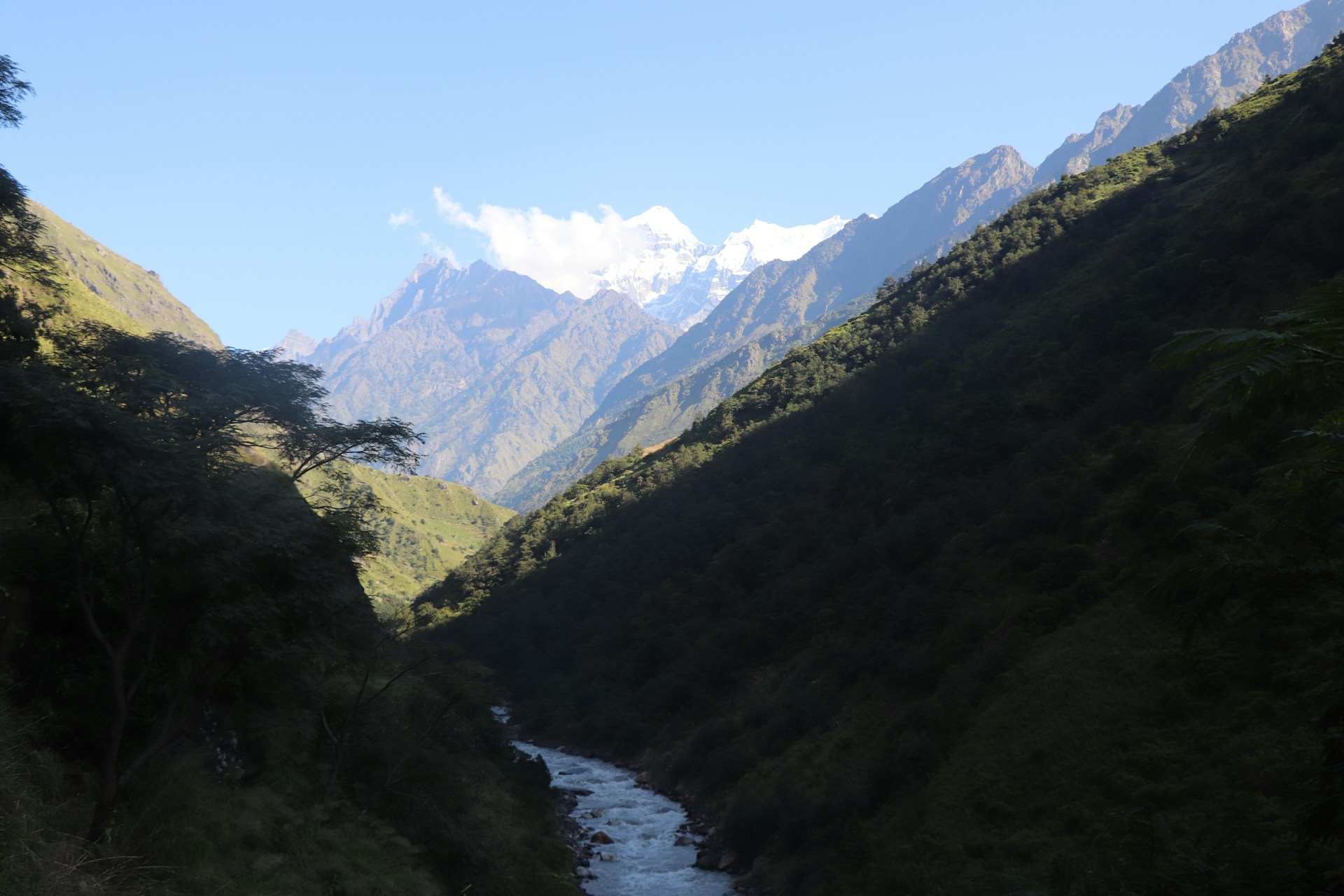
Trip Information for Tsum Valley Trek
Airport Transfers
We provide a complimentary airport pick-up and drop-off service for all our clients. Upon arrival at Tribhuvan International Airport, Kathmandu, our representative will greet you with a company signboard and a traditional welcome garland. You will be transported to your hotel in a private vehicle. Similarly, for your departure, we ensure a smooth transfer from your hotel to the airport. Please provide us with your flight details to avail of this service.
Start of the Journey
Travelers are advised to arrive in Kathmandu two days prior to the scheduled departure date of the trek to allow sufficient time for necessary preparations. We require one full weekday to secure a restricted area permit essential for the Tsum Valley trek. Early arrival also facilitates a comprehensive pre-trek briefing, especially if you miss the online session. The trek begins with a drive from Kathmandu to Soti Khola via Arughat.
Transportation
The package includes round-trip local bus transportation between Kathmandu and Arughat. For added comfort, private jeep hire is available at an additional cost.
Accommodation During the Trek
This 16-day trek includes 15 nights of lodge accommodations in the best lodges selected for their cleanliness. Where available, rooms with attached bathrooms will be provided. Note: Hotel stays in Kathmandu before and after the trek are not covered under this package.
Dining on the Trek
The trek includes all meals: 16 breakfasts, 16 lunches, and 15 dinners, offering a mix of local, Asian, and Western cuisine. Popular dishes available include Tibetan bread, dal bhat (rice and lentils), momos (dumplings), and various noodle dishes. Fresh vegetables and a variety of hot drinks are advisable at high altitudes, although non-vegetarian items, dairy, caffeinated, and alcoholic drinks are recommended to be avoided.
Best Time to Trek
Optimal trekking conditions are typically during spring (March to May) and autumn (September to November). These seasons provide the best mountain visibility and favorable weather. The Tsum Valley is particularly captivating in spring when rhododendrons bloom, enhancing the scenic beauty of the trek.
Trek Grade and Physical Requirements
The Tsum Valley trek is considered moderate and is accessible to anyone in good health able to walk for 4-6 hours a day. Higher elevations may be challenging due to thinner air, and pre-trek fitness preparations are recommended.
Group or Solo Trekking
The Nepali government mandates a minimum of two trekkers for issuing a special permit, making solo treks not feasible under this rule. We organize both private and group treks and can assist in pairing solo trekkers with a group.
A Typical Day on the Trek
Each day begins early with tea/coffee, followed by a hearty breakfast before setting off. The morning trek lasts about 3-4 hours, followed by lunch and a shorter afternoon trek. Evenings are spent at leisure in the lodges where dinner is served around 6-7 PM, followed by a briefing for the next day’s route.
Communication Facilities
Internet service is available at most lodges for a fee. Mobile phone coverage varies by location. In remote areas, satellite phones carried by guides are used for emergencies.
Additional Personal Expenses
While all meals on the trek are included, personal expenses such as snacks, drinks, and souvenirs are not. Trekkers should plan to carry cash in Nepalese currency for such expenditures.
Electricity and Water on the Trek
Electricity for charging devices is available at lodges for a fee. Trekkers are advised to carry water purification methods, as bottled water may not be environmentally sustainable in remote areas.
This detailed itinerary and service breakdown ensure trekkers can fully prepare for their Tsum Valley adventure, understanding all aspects of the trek and services provided.
Typical Day on the Tsum Valley Trek
Each day on the Tsum Valley Trek brings its own set of challenges and delights, setting you into a natural rhythm surrounded by breathtaking mountain views, intriguing people, and the stunning landscapes of Nepal. Despite the daily routines, every day feels different with changing sceneries that vary from lush forests to stark rocky expanses, from deep river gorges to expansive yak pastures. With altitudes reaching over 3,000 meters (9,842.5 ft), the trek typically involves about six hours of walking each day. The pace is slow and steady, allowing you to fully engage with the environment and the many Tibetan-style villages you'll pass through. The path is decorated with Tibetan Buddhist artifacts, including shrines and monasteries, enhancing the spiritual atmosphere of the trek.
Tipping the Guide and Porter
It is customary to show appreciation for the guide and porter through tips. Normally, guides should receive about 10% of your total trip cost (excluding personal expenses like drinks), while porters should receive 10% of their hire cost. Since porters might not return to Kathmandu with you, coordinate with your guide on the appropriate time to offer your tip.
Communication on the Trek
Communicating while on the Tsum Valley Trek can be challenging. It might be a good idea to inform friends and family that you’ll be out of contact for the duration of the trek, providing a perfect escape from social media and daily pressures. While phone charging services are available at teahouses for a fee, and some villages might have mobile network coverage, connectivity is not guaranteed. For more reliable communication, purchase a local SIM card (NTC is recommended for the Manaslu region) upon arrival in Nepal, which might offer better service in the mountains compared to international roaming.
Trip Extensions
The standard Tsum Valley Trek spans 11 days, but many trekkers choose to extend their adventure to explore more of the Manaslu area. A combined Manaslu Circuit and Tsum Valley Trek lasts about 20 days and includes a visit to Manaslu Base Camp and a crossing of the high Larky Pass at 5,160 meters (16,929 ft), offering views of Pongkar Lake’s icefalls and the Salpu Danda Glaciers. This extended trek is more demanding but provides a rewarding experience with higher altitudes and more complex trails.
Trek Difficulty
The Tsum Valley Trek is considered strenuous and is suited for those in good physical condition. Prior trekking experience is beneficial as it prepares you physically and mentally for the rugged and uneven terrain encountered on the trek. The daily walking time averages around six hours, but starting at lower altitudes provides ample time for acclimatization, minimizing altitude sickness risks.
To prepare for the trek, it's advisable to increase your physical activity weeks before your arrival in Nepal. Hiking local hills with a backpack similar to what you will carry on the trek, and engaging in weight and cardiovascular training, are effective ways to enhance your stamina and ensure you are ready for the physical demands of the Tsum Valley Trek.
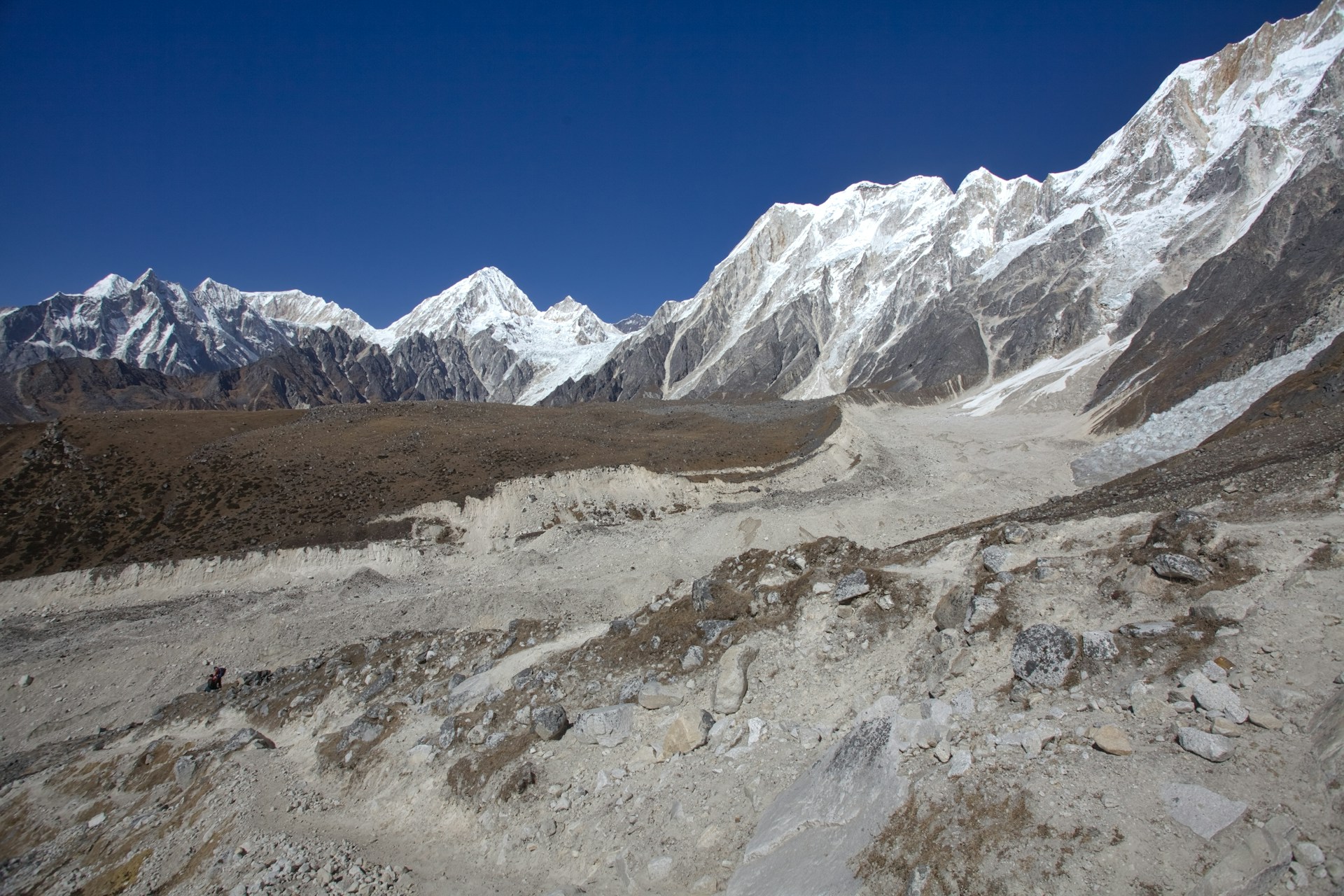
Detailed Itinerary for Tsum Valley Trek
Day 1: Arrival in Kathmandu (1,350m) & Transfer to Hotel
- Arrive at Tribhuvan International Airport where you will be warmly greeted by our representative and transferred to your hotel in Kathmandu. The rest of the day is free for you to explore the vibrant capital city.
Day 2: Drive from Kathmandu to Machhakhola (870m) - Duration: 7-8 hours
- Early morning drive from Kathmandu through the scenic foothills and along the Trishuli River towards Machhakhola. This journey offers a first glimpse of the rural landscapes of Nepal.
Day 3: Trek from Machha Khola to Jagat (1,410m) - Duration: 6-7 hours
- The trek begins along a narrow trail that snakes through forested areas and small villages. You will cross several suspension bridges today, with the river roaring below and enter the Manaslu Conservation Area by the end of the day.
Day 4: Trek from Jagat to Lokpa (2,390m) - Duration: 5-6 hours
- Today, you'll trek through dense forests and ascend to higher altitudes, noticing a change in the vegetation and surroundings as you move closer to the Tibetan Plateau. Lokpa is the first entry into the Tsum Valley.
Day 5: Trek from Lokpa to Chumling (Lower Tsum) (2,390m) - Duration: 5-6 hours
- Trek deeper into the Tsum Valley, known for its pristine beauty and strong Tibetan influence. Chumling is located on the south face of the Shingri Himal and offers breathtaking views of the Ganesh Himal.
Day 6: Trek from Chumling to Chokhangparo (3,010m) - Duration: 4-5 hours
- As you ascend to Chokhangparo, you will pass through traditional villages and experience the unique culture of the Tsum Valley. Chokhangparo offers spectacular panoramic views of the Himalayas.
Day 7: Trek from Chokhangparo to Nile (3,361m) - Duration: 5-6 hours
- Continue through small villages and past Buddhist monasteries, which are integral to the local community. Nile is the last northern settlement in the valley, near the Tibetan border.
Day 8: Trek from Nile to Mu Gompa (3,700m) - Duration: 3 hours
- A shorter trekking day, head towards Mu Gompa, situated at the highest point of Tsum Valley. Explore this ancient monastery and the surrounding areas, which are rich in Tibetan Buddhist culture.
Day 9: Trek from Mu Gompa to Chumling (2,386m) - Duration: 5-6 hours
- Begin your descent back down the valley, retracing your steps to Chumling, which provides another opportunity to soak in the tranquil beauty and serenity of the Tsum Valley.
Day 10: Trek from Chumling to Philim (1,570m) - Duration: 6-7 hours
- Continue the descent through beautiful landscapes, crossing rivers and passing through bamboo forests on your way to Philim, a Gurung village known for its agriculture.
Day 11: Trek from Philim to Soti Khola (700m) - Duration: 6-7 hours
- Your last trekking day involves walking down to Soti Khola, enjoying the lush surroundings and reflecting on the spiritual journey you've undertaken in the Tsum Valley.
Day 12: Drive from Soti Khola to Kathmandu (1,350m) - Duration: 7-8 hours
- Return to Kathmandu by road, a journey that allows you to unwind and reminisce about your experiences. Spend the evening in Kathmandu, perhaps enjoying a celebratory dinner.
Day 13: Final Departure
- Depending on your flight schedule, transfer to the airport for your onward journey or extend your stay in Nepal to explore more.
This itinerary provides a comprehensive and enriching experience in the Tsum Valley, allowing for both exploration and contemplation in one of Nepal's most serene and spiritually rich regions.
FAQs for Tsum Valley Trekking
1. I have never hiked before; can I make the Tsum Valley Trek?
- Tsum Valley Trek is considered moderate in difficulty. While previous hiking experience is beneficial, beginners who are in good health and can handle approximately 6 hours of hiking per day can complete the trek. Pre-trek physical training is recommended.
2. What is the best season for the Tsum Valley Trek?
- The best seasons for trekking in Tsum Valley are spring (March to May) and autumn (September to November). These seasons provide stable weather and clear skies.
3. How much does it cost for a permit?
- The permit cost for Tsum Valley trekking includes a Manaslu Conservation Area Permit (MCAP) and a Restricted Area Permit (RAP). The RAP costs around $35 per week.
4. Is there an age limit for Tsum Valley trekking?
- There is no official age limit, but the trek is physically demanding. It is suitable for children and elders who are physically fit and have some trekking experience.
5. What are the meals on the Tsum Valley trekking like?
- Meals include local, Asian, and Western cuisine that is simple yet nutritious, catering to a variety of dietary preferences, including vegetarian options.
6. What kind of accommodation will be provided during the Tsum Valley trekking?
- Accommodations are typically in teahouses or lodges that provide basic, clean facilities. Rooms are usually shared with twin beds.
7. Are there toilet facilities at the tea houses? What opportunities will I have for a shower during trekking?
- Most teahouses offer shared toilet facilities. Showers are available in some places for a small fee, though hot water may not always be available.
8. What kind of clothes do we require for trekking, and is it possible to purchase it in Kathmandu before the start of the trip?
- You will need warm, layered clothing, including thermal underwear, fleece jackets, and waterproof outer layers. You can purchase all necessary clothing and equipment in Kathmandu.
9. Do I need to bring any bags for trekking? If yes, what kind?
- A sturdy trekking backpack and a daypack are essential. Ensure your main pack is comfortable for carrying by porters and your daypack can hold personal items you need access to during the day.
10. Do I need to bring any personal equipment like sleeping bags, down jackets, trekking poles, etc.?
- Yes, personal equipment is recommended. You can either bring them from home or rent or buy them in Kathmandu.
11. Is it possible for me to store extra clothing that I will not need?
- Yes, most hotels in Kathmandu offer storage facilities for clothes and other items you do not need to carry on the trek.
12. What problems can arise on high altitude?
- The main concern is altitude sickness. Symptoms include headache, nausea, and dizziness. Acclimatization days and proper hydration help mitigate these risks.
13. Do I need insurance for Tsum Valley trekking?
- Yes, comprehensive travel insurance that covers medical treatment, emergency evacuation, and theft of personal items is highly recommended.
14. How long do I need to walk per day during my trek to Tsum Valley?
- On average, you will be walking 5-7 hours per day.
15. How long will it take to reach Tsum Valley?
- It takes about 5 days of trekking to reach the main areas of Tsum Valley from the starting point at Soti Khola.
16. How safe is Tsum Valley trekking?
- Tsum Valley is considered safe for trekking. However, like any high-altitude trek, there are natural and health risks involved.
17. What is the mode of transportation?
- Transportation to and from the trailhead (Soti Khola) is typically by local bus or a private jeep.
18. What is the luggage limit for a porter?
- Each porter carries up to 18 kg (around 40 lbs), with the weight ideally split between two trekkers.
19. What types of liquid do I need to drink at high altitude?
- It's essential to stay hydrated; drink water, herbal teas, and soups. Avoid or limit caffeine and alcohol.
20. I am a vegetarian. Will I get enough meals on my trek?
- Yes, vegetarian meals are readily available and are often fresher as they feature local produce.
21. Do I need to tip my porter and guide?
- Tipping is customary and appreciated, reflecting satisfaction with the service provided.

